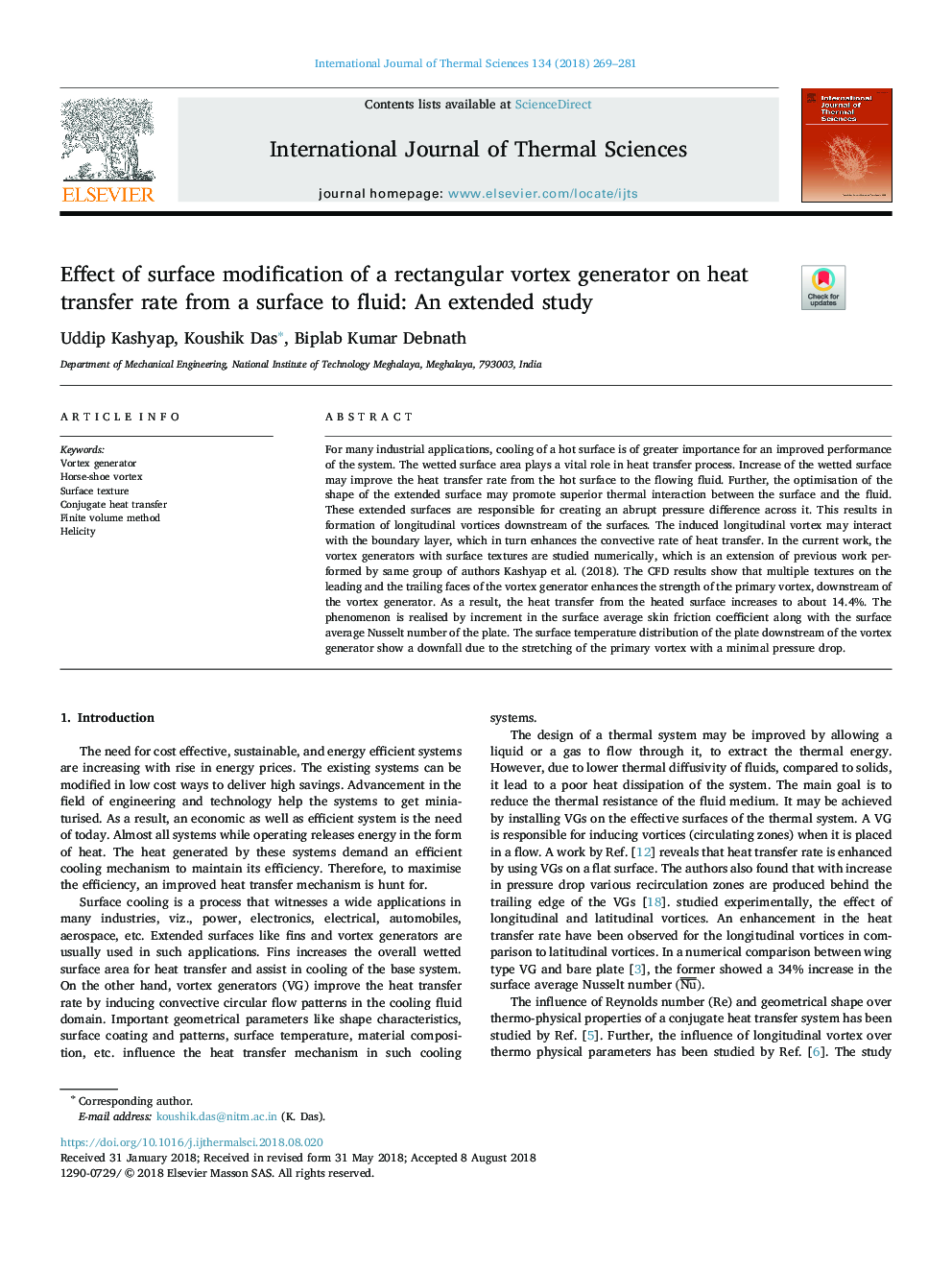| Article ID | Journal | Published Year | Pages | File Type |
|---|---|---|---|---|
| 7060526 | International Journal of Thermal Sciences | 2018 | 13 Pages |
Abstract
For many industrial applications, cooling of a hot surface is of greater importance for an improved performance of the system. The wetted surface area plays a vital role in heat transfer process. Increase of the wetted surface may improve the heat transfer rate from the hot surface to the flowing fluid. Further, the optimisation of the shape of the extended surface may promote superior thermal interaction between the surface and the fluid. These extended surfaces are responsible for creating an abrupt pressure difference across it. This results in formation of longitudinal vortices downstream of the surfaces. The induced longitudinal vortex may interact with the boundary layer, which in turn enhances the convective rate of heat transfer. In the current work, the vortex generators with surface textures are studied numerically, which is an extension of previous work performed by same group of authors Kashyap et al. (2018). The CFD results show that multiple textures on the leading and the trailing faces of the vortex generator enhances the strength of the primary vortex, downstream of the vortex generator. As a result, the heat transfer from the heated surface increases to about 14.4%. The phenomenon is realised by increment in the surface average skin friction coefficient along with the surface average Nusselt number of the plate. The surface temperature distribution of the plate downstream of the vortex generator show a downfall due to the stretching of the primary vortex with a minimal pressure drop.
Related Topics
Physical Sciences and Engineering
Chemical Engineering
Fluid Flow and Transfer Processes
Authors
Uddip Kashyap, Koushik Das, Biplab Kumar Debnath,
